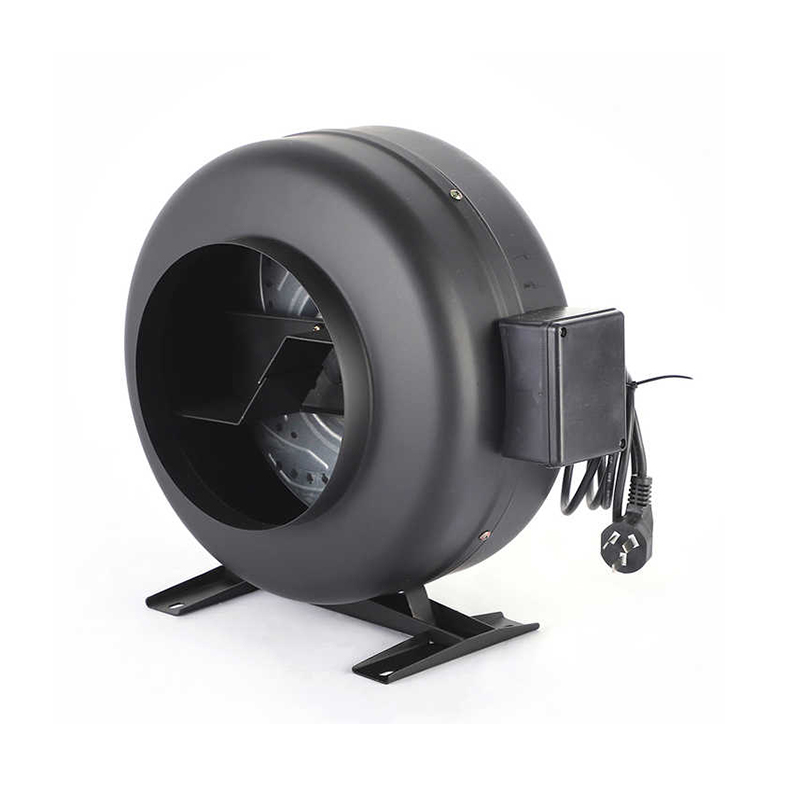Qinlang focuses on providing high-quality products and considerate services, and is committed to meeting every expectation of our customers.
The DKT-133 Cooling Ventilation Double Inlet Air Conditioning Fan is d...
See DetailsIn the realm of HVAC and ventilation systems, understanding the nuances between different types of fans is essential for proper installation and operation. Two such devices that often draw attention are duct line fans, inline duct exhaust fans, and exhaust inline fans. While they may seem similar at first glance, each serves distinct purposes and comes with its own set of features.

The Function of Duct Line Fans
Duct line fans are a type of ventilation system component designed to boost airflow within ductwork. These fans are typically installed within the duct itself, hence the "duct line fans." They are crucial in situations where the natural airflow provided by the main ventilation system is insufficient, such as in long duct runs or areas requiring additional pressure. The primary purpose of duct line fans is to maintain a consistent flow of air, ensuring that all spaces are adequately ventilated.
Inline Duct Exhaust Fans: A Closer Look
Inline duct exhaust fans, on the other hand, are specifically designed to remove stale or contaminated air from a space. These fans are installed in-line with the duct system and are optimized for exhaust applications. They are often used in areas where humidity or odors need to be managed, such as bathrooms, kitchens, or industrial facilities. Inline duct exhaust fans are engineered to handle higher static pressures and are built to withstand the rigors of continuous operation in exhaust systems.
Exhaust Inline Fans: A Vital Component
Exhaust inline fans are another variant that is used to expel air from a building. These fans are similar to inline duct exhaust fans but are often more compact and versatile. They can be used in a variety of applications, from small residential spaces to larger commercial settings. The key feature of exhaust inline fans is their ability to operate at high speeds to remove air quickly and efficiently. This makes them ideal for areas where rapid air exchange is necessary, such as in server rooms or during construction projects where dust and fumes need to be managed.
Comparing Duct Line Fans, Inline Duct Exhaust Fans, and Exhaust Inline Fans
When comparing duct line fans, inline duct exhaust fans, and exhaust inline fans, it's important to consider the specific needs of your ventilation system. Duct line fans are suited for situations where boosting airflow within the ductwork is necessary. They are not designed for exhaust duties and should not be used to remove air from a space.
Inline duct exhaust fans, as mentioned, are specialized for exhaust applications. They are built to handle the demands of removing air from a space and can be integrated into existing duct systems. These fans are more robust and are often preferred in commercial settings where high volumes of air need to be moved.
Exhaust inline fans offer a balance between the two. They are versatile and can be used in both residential and commercial applications. Their compact design makes them an outstanding choice for spaces where a large fan would be impractical. However, they may not be as powerful as inline duct exhaust fans in handling high static pressures.
Installation and Maintenance Considerations
When installing any of these fans, it's crucial to consider the size and specifications of the ductwork, as well as the specific requirements of the space. Duct line fans and inline duct exhaust fans often require professional installation due to their integration into the duct system. Exhaust inline fans, while easier to install, still need to be properly sized and positioned to ensure good performance.
Maintenance is another factor to consider. Duct line fans and inline duct exhaust fans may require more frequent cleaning due to their exposure to dust and debris within the ducts. Exhaust inline fans, being on the exhaust side, may also accumulate dirt and need regular cleaning to maintain efficiency.
Conclusion
Understanding the differences between duct line fans, inline duct exhaust fans, and exhaust inline fans is essential for selecting the right fan for your ventilation needs. Each type of fan serves a specific purpose and has unique characteristics that make it suitable for different applications. By considering the functions, installation requirements, and maintenance needs of each, you can ensure that your ventilation system operates at peak efficiency, providing a comfortable and healthy environment for occupants.